The week at a glance
- Magnolia Warbler on Fair Isle
- Swainson's Thrush, Sykes's Warbler and Blyth's Pipit on Foula
- White's Thrush in Northumberland
- Three east-coast Pallas's Grasshopper Warblers
- New Buff-bellied Pipits in Cork and on Scilly
- Short-billed Dowitcher still in Dorset
- Greater Yellowlegs reappears in Aberdeenshire
- Big arrival of Yellow-browed Warblers, Red-breasted Flycatchers and other scarce migrants
A deep low-pressure system peeling off Hurricane Nadine and tracking northwards to settle over Britain by Sunday produced some pretty horrific weather conditions across much of the country, with gales and rain causing extensive damage and widespread flooding. However, the weather also strongly contributed to the week's being the 'birdiest' of the year so far — easterly gales brought an excellent fall of passerine migrants to the east coast from East Anglia northwards. As one might expect, it was the Northern Isles (particularly Shetland) that fared best.
Despite the strong easterlies, it was an iridescent Nearctic sprite that headlined the week's action by some distance: a first-winter Magnolia Warbler was discovered hopping around a rocky geo on the west cliffs of Fair Isle (Shetland) during the late afternoon of 23rd. The first British record came almost to the day 31 years ago, so there were plenty of disappointed would-be twitchers when the unsurprising news came early on 24th that the bird had departed overnight. Given the lack of a westerly airflow this week, one can only suspect that this glorious little critter had made landfall further north (Scandinavia) and was caught up in the rather impressive fall that happened across the Northern Isles from Saturday onwards — an explanation that can also likely be applied to the Swainson's Thrush on Foula the same day!

Magnolia Warbler, Fair Isle, Shetland (Photo: Steve Arlow)
For those lucky enough to have been there, it was a fabulous week to be birding on Fair Isle. Apart from the Magnolia Warbler, the island could also boast Lanceolated Warblers on 23rd and 26th and a Paddyfield Warbler on 24th–26th, as well as Blyth's Reed and Arctic Warblers from 21st, Booted Warbler on 22nd and an Olive-backed Pipit. Add to this a wealth of scarcities including a Citrine Wagtail, up to four Little Buntings, several Red-breasted Flycatchers, Common Rosefinches and Barred Warblers and up to 28 Yellow-browed Warblers, and it was easy to describe the place as a birding paradise.

Arctic Warbler, Fair Isle, Shetland (Photo: Steve Arlow)

Blyth's Reed Warbler, Fair Isle, Shetland (Photo: Steve Arlow)
However, Foula did an excellent job of maintaining the pace, with a Sykes's Warbler on 23rd–26th the arguable highlight alongside the aforementioned Swainson's. With a Blyth's Pipit also there on 24th and both Olive-backed and Richard's Pipits, up to two Blyth's Reed Warblers and a maximum of 24 Yellow-browed Warblers, it wasn't a bad second to Fair Isle.
But these two island jewels didn't monopolize the arrival of rare birds — indeed, there was excitement along much of the east coast. One of the true highlights was the White's Thrush found trapped, rather bizarrely, in a gas cage on the Farne Islands (Northumberland) on 24th. Although it lingered for the rest of the day, it proved untwitchable due to foul weather preventing boats from landing on the islands. As the winds subsided on 26th, an unprecedented three Pallas's Grasshopper Warblers were found: the first was seen only briefly in the Jewish cemetery at Hartlepool (Cleveland) before melting away into scrub, and another trapped and ringed early afternoon at Whitburn (Durham) disappeared in similar fashion only to reappear briefly just before dusk. The third was reported as showing well in the copse at Whinnyfold (Aberdeenshire) from mid-afternoon through to dusk. Meanwhile, Shetland had already scored a Pechora Pipit and Lanceolated Warbler on Out Skerries on 21st, with Skaw (Whalsay) claiming another Lancy on 25th.

Pallas's Grasshopper Warbler, Whitburn Coastal Park, Durham (Photo: Steven Fryer)
Other scores from Shetland included further Blyth's Reed Warblers at Baltasound and Halligarth, Unst, on 21st and 26th and at Skaw, Whalsay, on 25th. A Great Reed Warbler spent the day crashing around in vegetation at Norwick, Unst, on 22nd and a Greenish Warbler was there on 23rd–24th. A Citrine Wagtail was at Muckle Roe on 23rd and a Great Snipe reported at Wester Quarff that day, while an Olive-backed Pipit on Yell and three Little Buntings (two on Mainland, two on Unst) both came on 26th. Just for good measure, a multitude of Yellow-browed Warblers carpeted the archipelago from the weekend onwards among good numbers of other regular migrants.

Great Reed Warbler, Norwick, Unst, Shetland (Photo: Mike Pennington)
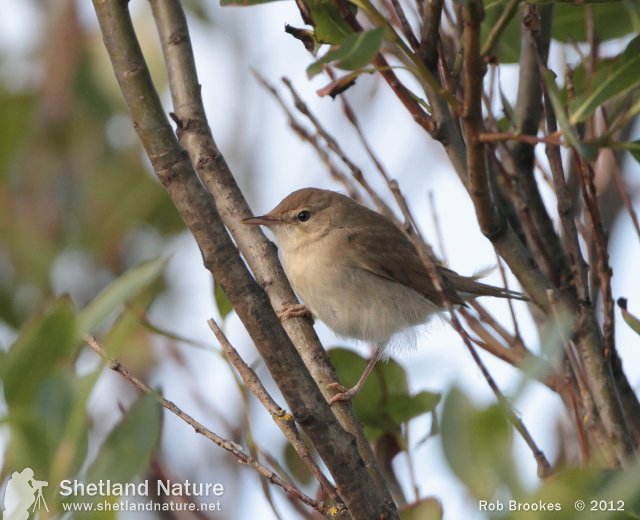
Blyth's Reed Warbler, Baltasound, Unst, Shetland (Photo: Robbie Brookes)
Surprisingly, North Ronaldsay (Orkney) remained comparatively quiet for eastern migrants — if you can call Lanceolated Warbler, Little Bunting, Citrine and Grey-headed Wagtails, and double-figure counts of Yellow-browed Warblers 'quiet'. Nevertheless, Orkney hit back with an elusive River Warbler at Burwick, South Ronaldsay, on 24th and an Olive-backed Pipit at nearby St. Margaret's Hope on 26th, while a Blyth's Reed was on Sanday on 21st.
As already noted, the east coast of the British mainland was also dripping with birds from East Anglia northwards. An Arctic Warbler on Holy Island (Northumberland) on 26th was a great find, joining at least three Red-breasted Flycatchers, Common Rosefinch, an Icterine and several Yellow-browed Warblers also there. A Greenish Warbler at East Hills, Wells (Norfolk) on 24th–25th was the only one away from the Yorkshire coast, where birds were at Filey on 25th–26th, and Flamborough and Kilnsea on 26th. Filey also held an Icterine Warbler, a species surprisingly scarce this week with just three individuals noted. A Booted Warbler at Burnham Overy (Norfolk) from 23rd was one of the better-quality birds along the coast.

Greenish Warbler, Kilnsea, East Yorkshire (Photo: Ron Marshall)

Booted Warbler, Burnham Overy, Norfolk (Photo: Anthony Griffiths)
Belated news came of a Citrine Wagtail at Barns Ness (Lothian) on 21st–22nd, while the first mainland Richard's Pipits of the autumn turned up in Norfolk and Cleveland. A Tawny Pipit overflew Cuckmere Haven (E Sussex) on 23rd. Drift migrants were well represented, with three Great Grey Shrikes, a reasonable scattering of Barred Warblers, Common Rosefinches, Red-backed Shrikes and Wrynecks, and an impressive arrival of Red-breasted Flycatchers — a remarkable 87 reports of the species were disseminated on Bird News Extra during the week! Multiple birds were noted in the Spurn and Kilnsea (E Yorks) area throughout, but a showy male at Warham Greens (Norfolk) on 22nd–25th proved the most popular fixture.

Red-breasted Flycatcher, Warham Greens, Norfolk (Photo: Rob Wilson)

Red-backed Shrike, Bawdsey, Suffolk (Photo: Chris Mayne)
From non-existence last week, Yellow-browed Warbler numbers shot through the roof following the arrival of the first birds during the morning of 22nd. In addition to the aforementioned tallies from the Northern Isles, the highest total was of 11 seen in the Spurn area on 22nd (with up to six there in the following days). Four were at Wells Woods (Norfolk) and at least three in nearby Holkham Pines, while Great Yarmouth cemetery claimed an excellent seven on 26th. Common migrant numbers were also impressive, with Redstarts particularly numerous: sample counts included 84 in the Spurn area on 25th.

Yellow-browed Warbler, Kilnsea, East Yorkshire (Photo: Chris Downes)
It was also a good week for Little Bunting records. Away from the Northern Isles, birds were seen at Burnham Overy Dunes (Norfolk) on 24th, South Gare (Cleveland) on 24th–26th and Collieston (Aberdeenshire) on 26th, while Northumberland claimed two: at Cresswell on 25th and a probable at Druridge Pools on 26th. An injection of juvenile Rose-coloured Starlings was also a result of the prevailing airflow, with seven reported between Shetland and Scilly, including a showy juvenile on St. Mary's (Scilly) from 24th and a two-day bird at Holme (Norfolk) from 25th.
The best of the remaining passerines were four Buff-bellied Pipits. One at Smerclate, South Uist (Outer Hebrides) from 21st was joined by a second bird on 26th, while Cape Clear (Cork) and St. Mary's (Scilly) grabbed singletons on 24th and 26th respectively. It is amazing to think that as recently as December 2005 the species was still an extreme rarity, the Lincolnshire bird of that month seemingly opening the floodgates. St. Mary's also boasted a Western Bonelli's Warbler on The Garrison on 20th–21st and an Aquatic Warbler at Porthloo on 25th–26th while nearby Tresco hosted a Citrine Wagtail from 24th. At least three Ortolans also graced the archipelago, while two were at Portland Bill (Dorset) on 26th. Further birds were seen in Norfolk, Dorset, Devon, Cornwall and Cork. Other odds and sods included a couple of Hoopoes in Clare and on Jersey, while a Melodious Warbler lingered on Lundy from 20th.

Buff-bellied Pipit, St. Mary's, Isles of Scilly (Photo: Martin Goodey)
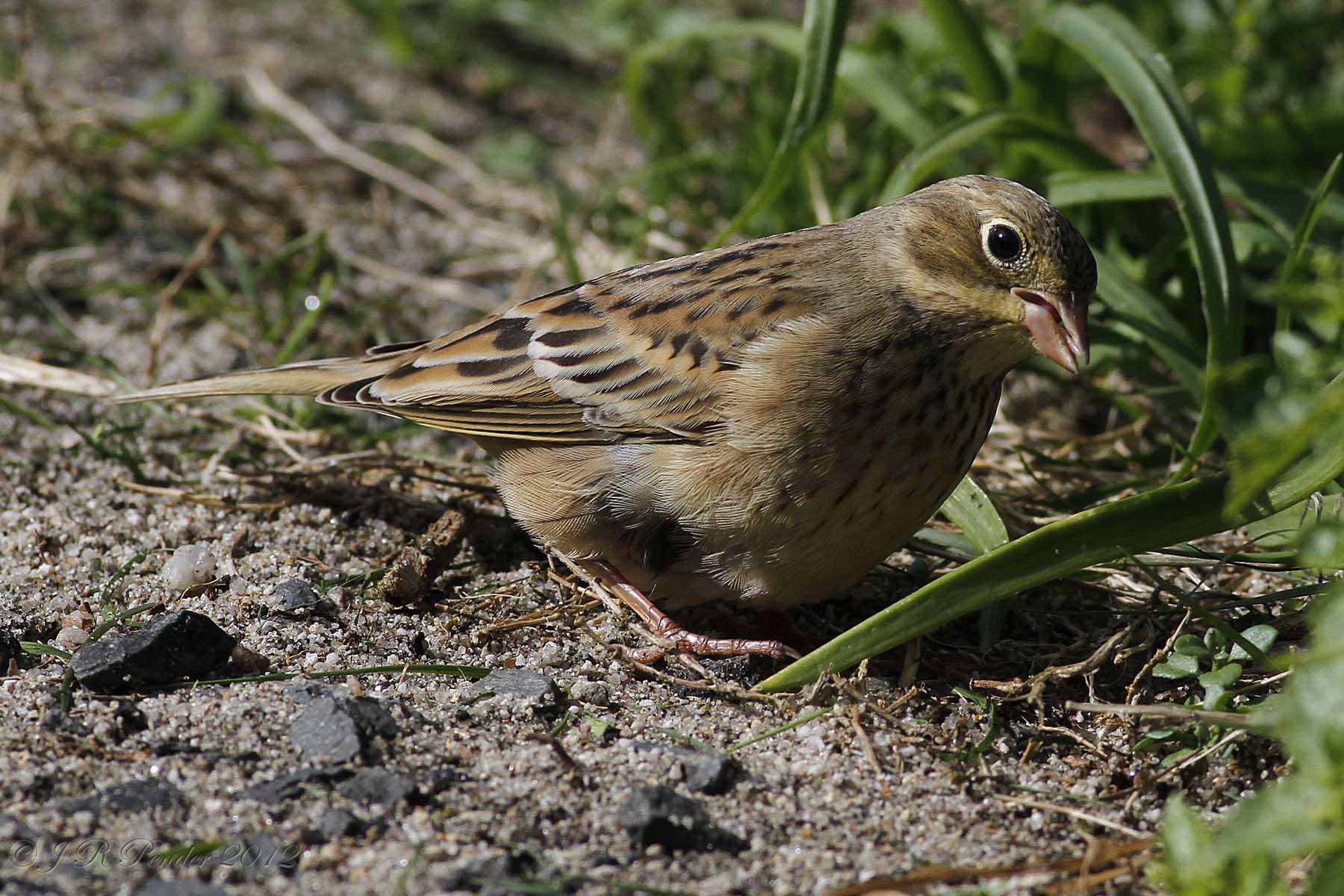
Ortolan Bunting, St. Mary's, Isles of Scilly (Photo: Joe Pender)
In addition to passerines, the easterly gales also produced some fine seawatching, particularly in the northeast. Fea's-type Petrels seen off Spurn (E Yorks) on 22nd and Fraserburgh (Aberdeenshire) on 26th were the rarest species seen, although it was more a time to appreciate sheer numbers of birds: excellent tallies of all four skuas were seen off much of Scotland, while several inland records included a juvenile Long-tailed photographed flying over Beddington Sewage Farm (London) on 25th and another over Belvide Reservoir (Staffs) that day. Good numbers of Leach's Storm-petrels, Sabine's Gulls and Grey Phalaropes were also noted among the more expected species, while the first Little Auks of the autumn were seen further north. Several storm-driven casualties were noted inland, particularly in the north where Guillemots included two at Loch Leven (Perth/Kinross) and a remarkable 22 at the Lake of Monteith (Forth) on 26th in addition to Gannets noted at plenty of sites.

Long-tailed Skua, at sea, East Yorkshire (Photo: James Spencer)
After a bumper couple of weeks, the numbers of Nearctic shorebirds fell away slightly this week in the absence of a westerly airflow. Nevertheless, over 20 American Golden Plovers noted included no fewer than eight in the Outer Hebrides. Two adults remained on North Ronaldsay (Orkney) with a third for the archipelago on Sanday. Irish birds were in Donegal, Galway (2), Kerry, Cork and Wexford (2), while two English records concerned the remaining Cumbrian adult and a juvenile at Fleetwood (Lancs) on 26th.

American Golden Plover, Pilmore, Cork (Photo: Graham Clarke)
In Dorset, the Short-billed Dowitcher remained at Lodmoor throughout the week; the bird is already rapidly losing the glorious golden-buff of fresh juvenile plumage and has started to moult its scapulars. Meanwhile, the adult Long-billed remained at Slimbridge throughout, with one of the week's twenty or so Buff-breasted Sandpipers also seen there. Notable new Buff-breasteds included a fly-through at Oare Marshes (Kent) and at least one at Davidstow Airfield (Cornwall) from 21st, though the vast majority were lingering birds in the far north and west. The same could be said for Pectoral Sandpipers: 105 reports on Bird News Extra during the week primarily concerned 'old' birds, although three on The Dumbles at Slimbridge was a notable count. Further shorebird interest came with the reappearance of an old friend: the Greater Yellowlegs was again at Loch of Strathbeg (Aberdeenshire) on 26th, while the juvenile Lesser Yellowlegs remained at Kingsmill Lake (Cornwall) throughout.

Short-billed Dowitcher, Lodmoor RSPB, Dorset (Photo: Mike Trew)
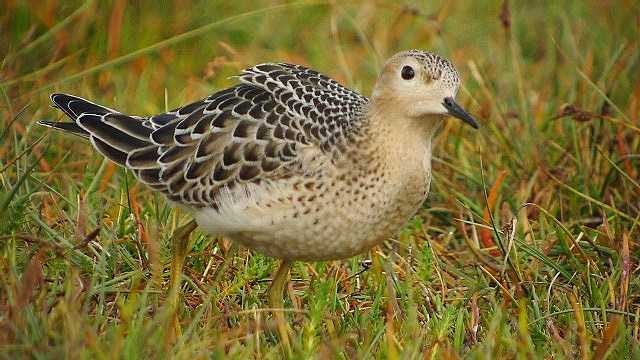
Buff-breasted Sandpiper, John Muir CP, Lothian (Photo: D Abraham)
Up to two adult White-rumped Sandpipers were noted at Carnan, South Uist on 21st–23rd, with further adults still at Steart (Somerset), Tacumshin (Wexford), the Ouse Washes (Cambs) and Hoylake (Cheshire) in addition to a report of an early juvenile at Elwick (Northumberland) on 20th. Also in Northumberland, an adult Baird's Sandpiper was an excellent (if not odd!) arrival to the Farne Islands on 26th; a juvenile was briefly at Old Moor (S Yorks) on 22nd while the contentious juvenile was also seen again at Titchwell. Two Semipalmated Sandpipers were at Garretstown (Cork) on 20th with one remaining to 22nd, while other juveniles were at Ynyslas (Ceredigion) on 20th–22nd, at Blennerville (Kerry) on 24th and still at Tyninghame Bay (Lothian) to 20th. A bird seen at Dungeness (Kent) on 17th was belatedly identified from photographs, while the juvenile (considered a Western Sandpiper by some) was still at Hoylake to 24th at least.

Semipalmated Sandpiper, Garretstown, Cork (Photo: Graham Clarke)
Returning geese included two Snow Geese on Islay on 21st and another couple with the Pink-footeds at Beal (Northumberland) on 23rd, and a fifth was at the Bay of Suckquoy (Orkney) on 26th. The first Black Brant of the autumn returned to Castle Espie (Down) on 23rd. The drake Ring-necked Duck was again at Orgreave Lagoons (S Yorks) on 26th after a couple of day's absence, while the drake Ferruginous Duck remained at Far Ings (Lincs) and the Lesser Scaup at Chew Valley Lake. The drake Black Duck was still on Achill Island (Mayo) on 20th alongside at least one hybrid, while a drake Surf Scoter was new off Muckle Roe (Shetland) in addition to at least one remaining bird off the Aberdeenshire coastline.
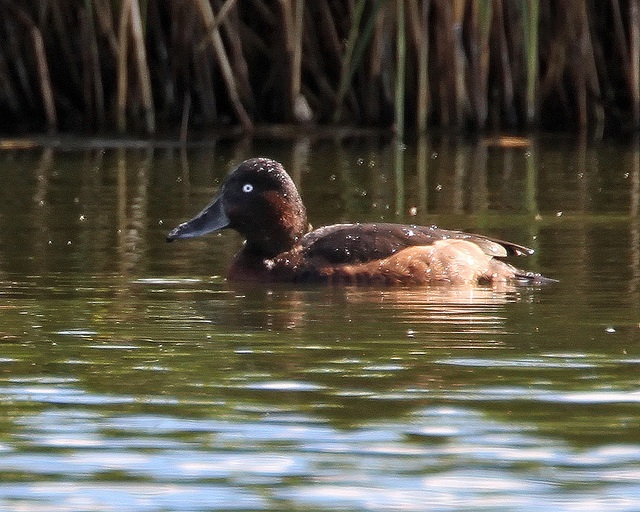
Ferruginous Duck, Far Ings NR, Lincolnshire (Photo: Mark Coates)
The Baillon's Crake was still at Rainham Marshes (London) on 23rd but not since. Spotted Crakes included up to two lingering on at Marazion (Cornwall), and others were still at Greylake (Somerset) and again at Coombe Hill Meadows (Glos).
A Cattle Egret was a good find on North Uist on 26th, while around 20 Great White Egrets included new individuals at Wilstone Reservoir (Herts) and Beddington (London), although these perhaps relate to the same bird. Others included twos at Stodmarsh (Kent) and again on the Somerset Levels, while the Worcestershire individual reappeared at Grimley. Glossy Ibises remained in Wexford and Cambridgeshire, though the latter individual did make the short flight to Welney (Norfolk) on 23rd.

Great White Egret, Stodmarsh NNR, Kent (Photo: Steve Ashton)
At least one Azorean Yellow-legged Gull remained in Cork, with birds noted at Timoleague on 20th and Rosscarbery on 22nd. Adult Ring-billed Gulls remained in Forth, Down and Antrim, with the latter county continuing to host the Bonaparte's Gull at Larne. In Louth, the Forster's Tern was again off Soldier's Point on 23rd.
Photo of the Week

Guillemot, Portmahomack, Highland (Photo: Willie)
With close to a quarter of a million bird photos now uploaded to our website, it's not often we see something really different, especially for common species. This week, bird photographer Willie Carlyle uploaded an image that, at first glance, seemed like a typical shot of a seabird diving for fish. After a double-take, it did indeed turn out to be a seabird diving for fish, but it was far from typical. First, the bird in question was a Guillemot, a species whose standard feeding technique is to chase fish from an unceremonial surface dive, not from a vertical plunge dive. Then you realise that, despite the bird being just about to enter the water, it already has a trail of splashes behind it. As Willie succinctly explains, the bird was 'doing a dolphin', not 'doing a Gannet'. To get any kind of record shot depicting this unusual behaviour would be hugely challenging, but to have nailed such an excellent action shot (from the shore!) is incredible. After years of posting to BirdGuides, Willie deservedly joins the list of Photo of the Week winners.
Other notable photos

Nuthatch, Ayr, Ayrshire (Photo: Chas Moonie)

Pectoral Sandpiper, Toft Newton Reservoir, Lincolnshire (Photo: Nick Clayton)

Blue Tit, Laurieston, Dumfries & Galloway (Photo: Alan McFadyen)
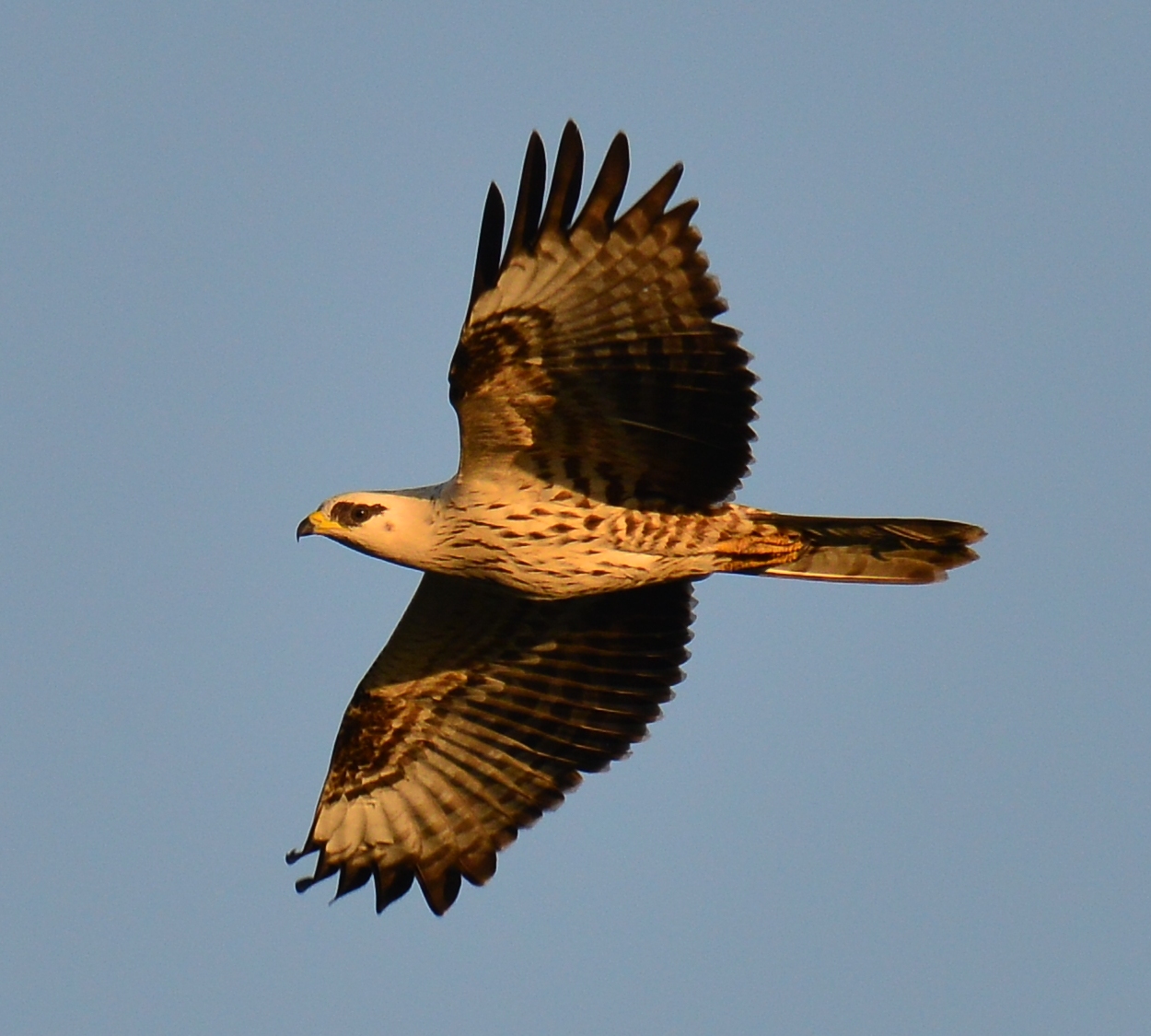
Honey Buzzard, Malta (Photo: Natalino Fenech)

Yellow-browed Warbler, Hartlepool Headland, Cleveland (Photo: Ian Forrest)

Peregrine, Isle of May, Fife (Photo: John Anderson)

Tawny Eagle, Kenya (Photo: Jacqui Herrington)

Bearded Tit, Grove Ferry NNR, Kent (Photo: Steve Ashton)

Red Grouse, undisclosed site, North Yorkshire (Photo: Steve Round)

Twite, Dalsetter, Yell, Shetland (Photo: James Wood)

Grey Heron (with Teal), Eyebrook Reservoir, Leicestershire and Rutland (Photo: John Turner)

Violet-crowned Woodnymph, Colombia (Photo: Stuart Elsom)
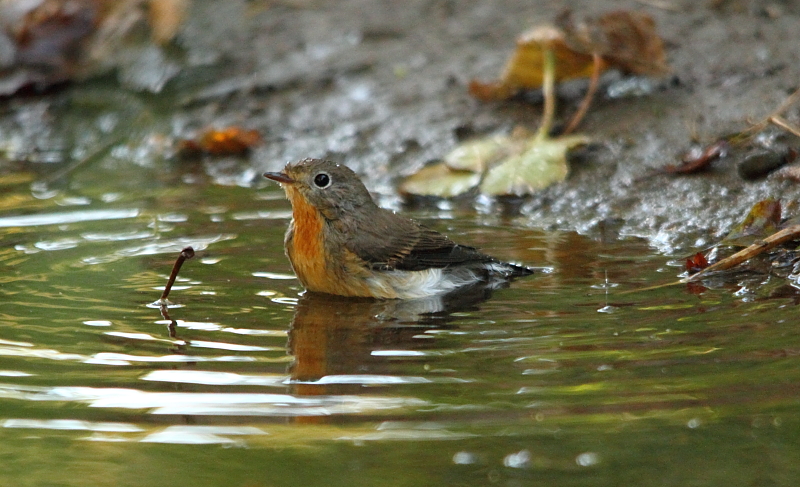
Red-breasted Flycatcher, Warham Greens, Norfolk (Photo: Viv Connett)
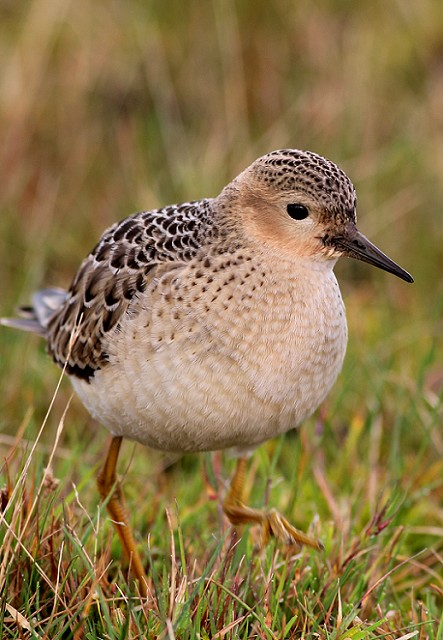
Buff-breasted Sandpiper, Davidstow Airfield, Cornwall (Photo: Steve Turner)
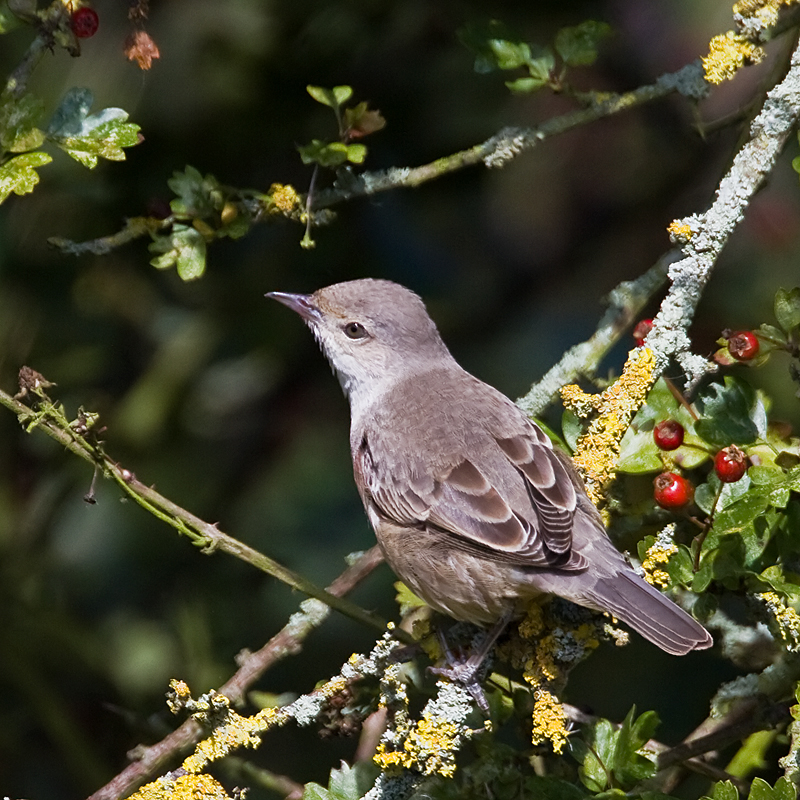
Barred Warbler, Holme Dunes NWT, Norfolk (Photo: Garth Peacock)


